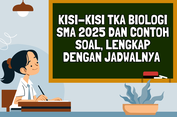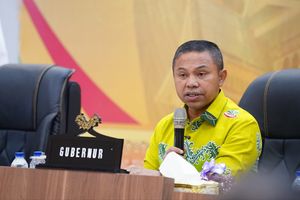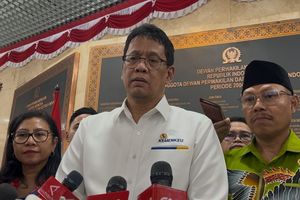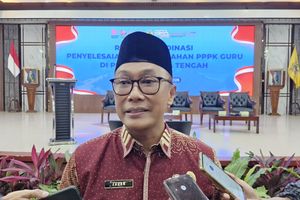45 Kunci Jawaban Simulasi TKA Bahasa Inggris Kelas 12
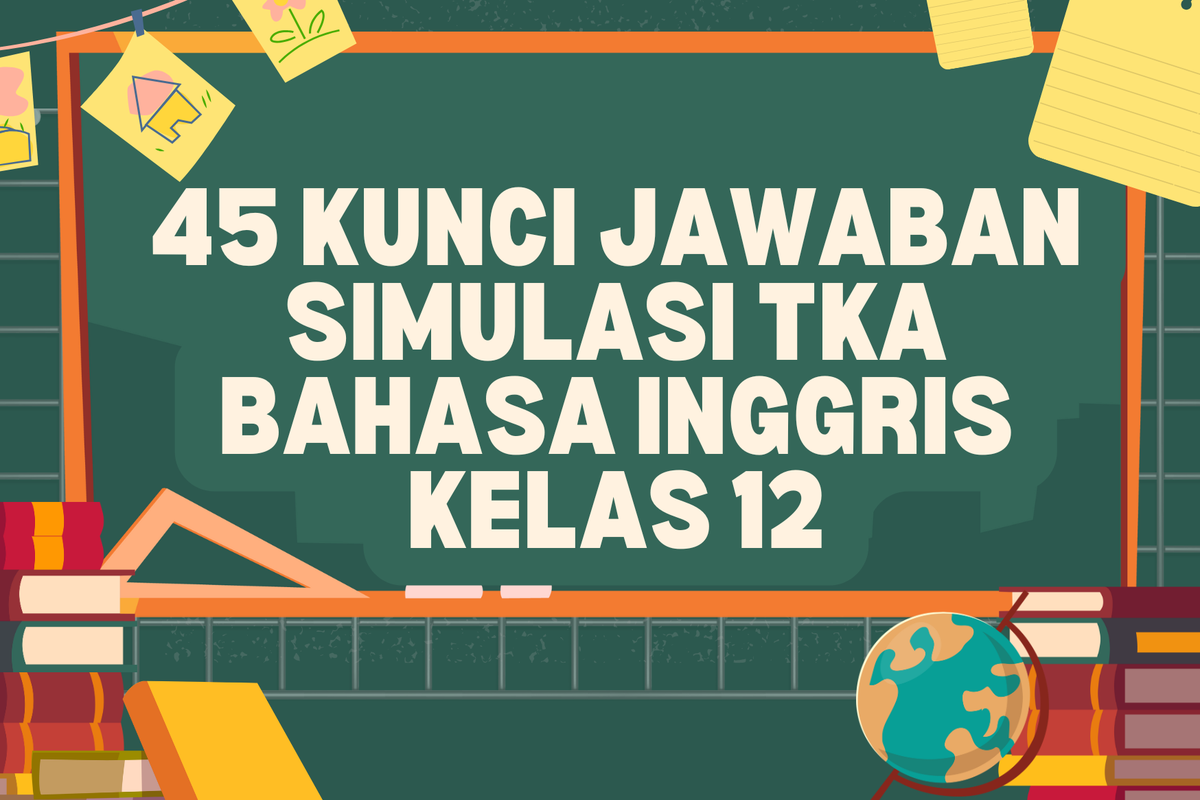
The idea of transforming our economies and societies must have equity or justice at its center, as the transition from the current unsustainable patterns of production and consumption to a more sustainable system is bound to have winners and losers. Advocates of climate justice take a human rights approach to sharing the costs and benefits of adjusting to climate change. By contrast, energy justice usually focuses on access to energy as a human right. And environmental justice emphasizes the agency of people and seeks to involve them in environmental decision making.
All three approaches touch on the political economy of a transition to more sustainable economies and societies. Any just transition will be a delicate balancing act. The concept of a just transition is not merely a technical process of moving from a fossil fuel–based to a low-carbon system, it is a political process. The status quo is not only disrupting planetary processes but also perpetuating inequalities. With this in mind, green innovation alone would not suffice to make the transition happen in the first place or to ensure that it is just. A just transition would require creating political coalitions among social and environmental movements, minority groups, labor unions, people employed in the energy sectors, and engaged local communities.
[1] In a way, the idea of a just transition gets to the core of sustainability.
[2] The aspiration of a transition to a just and sustainable human environment has been discussed since at least the mid-1980s.
[3] Rather than a fixed state we are aiming to reach, sustainability can be seen as a process of debate and inclusive deliberation.
[4] This view of sustainability as a process of exploring social, technological, and environmental pathways recognizes that different stakeholders view sustainability in different ways and have diverging narratives about what is or is not sustainable.
[5] This implies the need to identify, in each case, the actors, their framing of the situation, and their emphasis.
[6] This socially complex view of sustainability also implies that governments are not the only policy agents and that there is an important role for citizen engagement and mobilization, protest, and coalition building.
Source: Human Development Report, 2020 (with modifications)
36. What can we conclude from the text?
- The most important point of a just transition is that all stakeholders involved agree that no matter what it takes, there should be a shift from fossil-fuel based energy to cleaner, low-carbon alternatives.
- Human needs must set the direction for a just transition to occur. Sustainability won’t be achieved if human rights, the utmost priority, are not taken into the equation.
- Just transition is essential to sustainability. A just transition revolves around the idea that not only environmental concerns, but also social concerns, are relevant to sustainability.
- Governments as the authorities should not be the only ones defining what a just transition is. Rather, every stakeholder affected by environmental concerns should also help.
- Transition to a low-carbon society can perpetuate inequality if we are not careful. Therefore, each of us should fight to be heard in achieving environmental sustainability.
Answer: C
Baca juga: Membedakan Preposisi of, to, for, dan from dalam Bahasa Inggris
37. Which of the following questions cannot be answered by the text?
- What is a just transition to sustainability?
- What are the approaches to a more just transition?
- Who are the agents involved in bringing about a just transition?
- How should a just transition transpire?
- How do different stakeholders view a just transition?
Answer: E
38. According to the text, what might ‘inclusive deliberation’ mean?
- A deliberate way to achieving sustainability
- Different views of what sustainability is
- A discussion that includes different stakeholders
- Identification of sustainability actors
- A transitional phase to achieve sustainability
Answer: C
39. Which sentence does not belong in the last paragraph?
- Sentence 1
- Sentence 2
- Sentence 3
- Sentence 4
- Sentence 5
Answer: B
This text is for questions number 40–43
About 17 percent of global food production may go wasted, according to the UN Environment Programme’s (UNEP) Food Waste Index Report 2021, with 61 percent of this waste coming from households, 26 percent from food services, and 13 percent from retail. Food waste burdens waste management systems, increases food insecurity, and is a major contributor to the global problems of climate change, biodiversity loss, and pollution.
The Food Waste Index is the first of its kind to highlight the scale of the problem. Indeed, it suggests that global food waste could be more than twice the size of earlier estimates. Previous studies indicated that consumer food waste was exclusively a problem in developed countries, with production, storage, and transportation losses thought to be particular issues in the developing world. However, the report found that household food waste per capita is similar across high-income, upper middle-income, and lower middle-income countries. There was insufficient data on low-income ones.
The UN’s Food and Agriculture Organization (FAO) estimates that 690 million people went hungry in 2019, with these figures likely to rise post-COVID. With food insecurity affecting so many people across the world, the World Economic Forum’s Incentivizing Food Systems Transformation report argues that a transformation of the food sector is required to establish sustainable, nutritious, and healthy food systems.
It estimates that food loss and waste cost the global economy $936 billion a year, with between 8–10% of global carbon emissions linked to unconsumed produce. Overall, food systems cost society $12 trillion in health, economic, and environmental costs — which is 20% more than the market value of food systems. The report outlines how food systems transformation can be incentivized, including by repurposing public investment and policies; redesigning business models; getting investors to set higher standards for companies; and encouraging consumers to shift demand to more socially responsible products.
40. The main purpose of the passage is to ....
- Highlight the importance of changing the habits among consumers to bring down food waste
- Bring awareness to the substantial environmental, social, and economic impact of food waste
- Indicate that households and businesses are major contributors to food loss and waste problems
- Propose realistic solutions to decrease waste from the food industry while being economically viable
- Encourage countries to shift towards sustainable, nutritious, and healthy food systems
Answer: B
41. According to the passage, all of the following are correct, except ....
- While it has often been believed that food waste is more of a problem in wealthier countries, the problem is also prevalent in developing nations too.
- Households are the largest food waste producing sector, however, they are not the only part of the system that is responsible for the waste.
- Global food waste is a far-reaching problem with tremendous financial, ethical, and environmental costs.
- If we want to get serious about tackling climate change, citizens around the world play a key role in reducing food waste.
- In the developing part of the world, food waste is often due to technical limitations during the production process.
Answer: D
42. The passage states that while food waste is a global issue that affects the entire world, in the more developed countries, food waste occurs due to ....
- Consumer behavior
- Unreliable food companies
- Lack of government regulation
- Better supply chain efficiency
- Unhealthy food systems
Answer: A
Baca juga: Perbedaan AM dan PM serta Penggunaannya dalam Bahasa Inggris
43. As used in the third paragraph, the phrase “food insecurity” is closest in meaning to ....
- Food that is fit for consumption but consciously discarded at the retail or consumption phases
- The series of processes by which food is grown or produced, sold, and eventually consumed
- The state of being without reliable access to a sufficient quantity of affordable, nutritious food
- A state of sleep or extreme lethargy induced by the consumption of a large amount of food
- The measure of an individual's ability to access food that is nutritious and sufficient in quantity
Answer: C
44. It can be inferred from the passage that reducing food waste would ....
- Cut greenhouse gas emissions
- ISlow the destruction of nature
- IIEnhance the availability of food
- IIncrease food production
- I and II
- II and III
- I, II, and III
- II, III, and IV
- All of the above
Answer: C
This text is for question number 45
SARS-CoV-2. Monkeypox. Polio. Marburg. These viruses are no longer familiar just to public-health experts, but household names around the world, thanks to their recent incursions into human populations. People have always confronted pathogens of all sorts, but the attacks are becoming more commonplace and more intense than they ever have before.
The world has seen polio outbreaks before, for instance, as well as monkeypox clusters and cases of Marburg, a cousin of the deadly Ebola virus. We’ve even seen earlier versions of SARS-CoV-2 in the coronavirus outbreaks of 2002 and 2012. So why are these outbreaks piling up, seemingly all of a sudden, and at the same time?
The explanation lies in a gathering perfect storm of factors that taps into nearly every way we live our contemporary lives — from the ubiquity of worldwide travel to humans’ deeper encroachment into previously untouched natural habitats and the modernization that has led to climate change, urbanization, and overcrowding. Even the instantaneous and unfiltered way we communicate on social media is contributing, since misinformation is often shared, believed, and elevated to the same degree as trustworthy messages. Then, there is the mercurial and increasingly unstable balance of geopolitics driving millions from their homes and into refugee camps and migrant housing, which are fertile grounds for infectious diseases to spread.
Simply put, the multitude of infectious diseases facing the world today is “just the evolution of microbes and humans coming to a collision course,” says Michael Osterholm, director of the Center for Infectious Disease Research and Policy at the University of Minnesota.
Responding quickly and effectively will have to become routine if we are to weather the onslaught of outbreaks sure to head our way. “Microbial evolution is alive and well,” says Osterholm. “We are fighting an enemy that is growing and changing every day to accommodate as the world changes.”
Source: time.com
45. As used in the last paragraph, the word “weather” most nearly means ....
- Erode
- Survive
- Climate
- Wear away
- Disintegrate
Answer: B
Baca juga: Apa Bedanya Person dan People dalam Bahasa Inggris?
Dalam segala situasi, KOMPAS.com berkomitmen memberikan fakta jernih dari lapangan. Ikuti terus update topik ini dan notifikasi penting di Aplikasi KOMPAS.com. Download sekarang
























